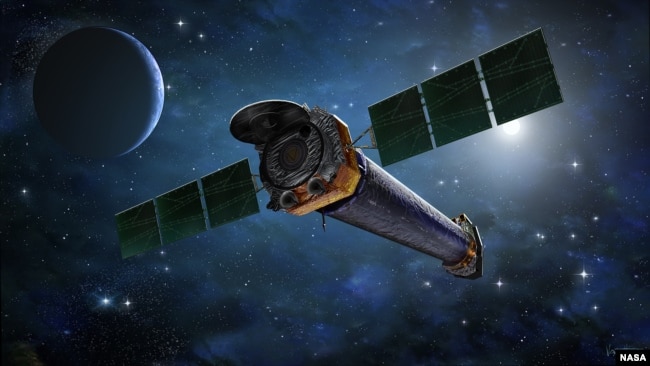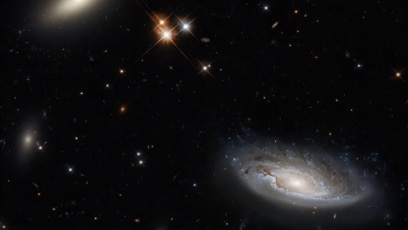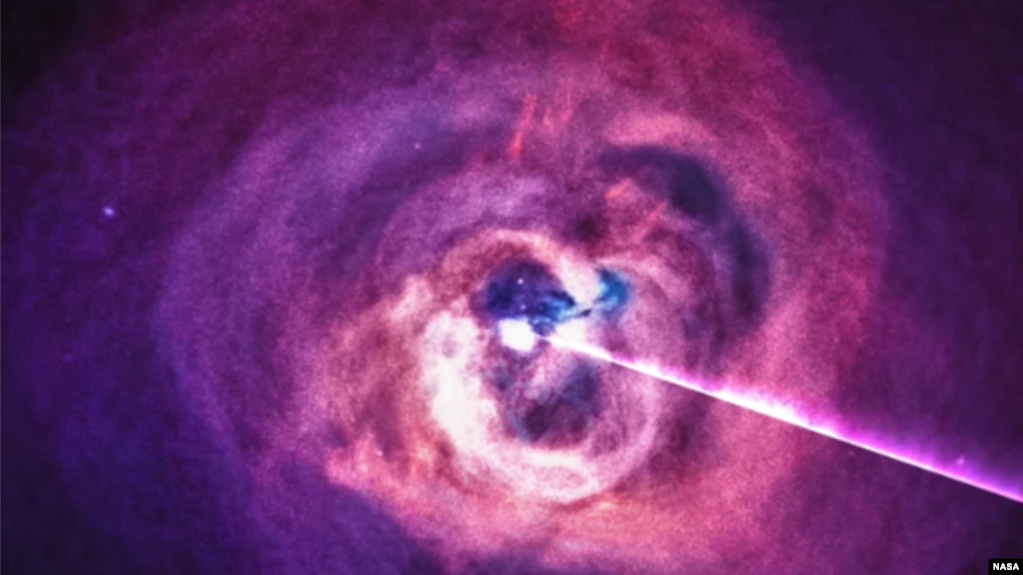The American space agency NASA has released sounds it created with data collected from black holes.
The sound production process is called sonification. NASA says it used astronomical data recorded by its Chandra X-ray Observatory. Special equipment then translates the data into audible sound.
NASA says the Chandra orbiting observatory is the world’s most powerful X-ray telescope.
One of the black holes studied sits at the center of the Perseus galaxy cluster, or group. The Perseus cluster is home to hundreds of galaxies. They are 240 million light years from Earth.
Black holes are areas in space where gravity is so strong that nothing – not even light – can escape them. They are believed to be formed by collapsed stars.

The presence of black holes affects the surrounding environment in extreme ways. But black holes are not easy to capture with a camera. This is because they are surrounded by thick dust and extremely hot gases.
NASA says it discovered in 2003 that the black hole deep inside the center of the Perseus galaxy cluster was linked to sound. Astronomers had earlier found that “pressure waves” sent out by the black hole caused ripples in the cluster’s hot gas.
Astronomers found that they could translate those ripples into a note of sound. But the note was at a very low range that humans cannot hear. Using new sonification methods, NASA says it was able to produce sounds from the ripples that we could hear.
In a statement, the space agency said that in some ways, the latest sonification was “unlike any other done before.” This is because the process “revisits the actual sound waves discovered in data” from the Chandra telescope.
NASA explains that there is a popular misconception that there is no sound in space. It notes that it is true that most of space exists in a vacuum, meaning it is separated from outside events or influences. But a galaxy cluster contains large amounts of gas that surrounds the many galaxies within it. This, NASA says, “provides a medium for the sound waves to travel.”
For the new sonification of the Perseus black hole, the NASA team used the sound waves they had collected in the past. But the astronomers then had to put the signals into a range that the human ear could hear. To do this, they greatly raised the pitch of the waves to a level far above their own frequency.
NASA published the sounds on its website. They are contained in videos that show visual representations of the X-ray data collected by Chandra. The video images can be used to follow the waves, which NASA says were sent out in different directions.
The space agency also released a new sonification of a black hole that became famous in 2019. That black hole sits at the center of the Messier 87 galaxy, about 55 million light years from Earth. It gained fame when astronomers announced they had successfully produced the first image of a black hole.
NASA says that sonification was based on X-ray data collected by Chandra, light captured by the Hubble Space Telescope, as well as radio waves from the Atacama Large Millimeter Array in Chile.
The black hole sounds were released as part of NASA’s Black Hole Week. As part of that event, the agency also released new “data visualizations” of black holes based on telescope observations.
I’m Bryan Lynn.
Bryan Lynn wrote this story for VOA Learning English, based on reports from NASA.
We want to hear from you. Write to us in the Comments section, and visit WWW.VOA-STORY.COM
Quiz – NASA Releases New Black Hole ‘Sounds’

Start the Quiz to find out
_____________________________________________________________
Words in This Story
translate – v. to change from one language to another or from one form to another
constellation – n. a group of stars that forms a particular shape in the sky and has been given a name
ripple – n. a small wave or series of small waves
misconception – n. an understanding of something that is wrong
pitch – n. a level of a particular sound
visual – adj. relating to seeing
